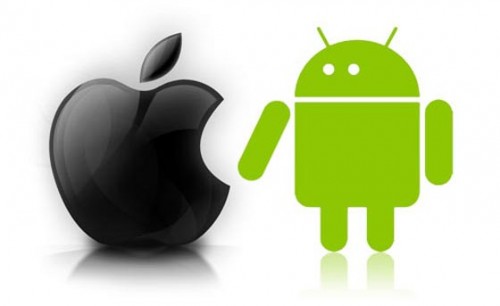
A new study has found that average Android and iOS app sizes have risen considerably as a result.
According to new study conducted by ABI Research, the global average iOS app size across all categories stood at 23MB last month, representing a 16 percent increase from March.
As expected, gaming is the most popular app category, with most apps weighing in at 60MB, which is a 42 percent increase over the last six months.
ABI said the third generation iPad's Retina display is one of the reasons for app size increases, in addition to Apple's revised submission policy. Back in March, it increased the size limits on apps downloaded over mobile networks from 20MB to 50MB.
"Their games can now be more complex and graphically polished, while still being able to benefit from the instant gratification of cellular downloads," ABI senior analyst Aapo Markkanen said.
Meanwhile, the average size of an Android app measured in at around 6MB in September, a 10 percent increase from what it was during March. The size of games for the platform, however, nearly quadrupled to 40MB; Google had also increased the size limit of its apps to 4GB.
Despite the fact that app sizes are increasing, storage capacity on both smartphones and tablets are not experiencing the same rate of development.
"Especially the consumers with 16GB devices are likely to become more conscious about what apps to keep and what to uninstall, so the developers' bar to impress will be getting even higher than it is now," Markkanen explained. "This could also speed up the adoption of the mobile cloud as a storage remedy quite significantly."
Contact Us for News Tips, Corrections and Feedback
Sign up to get the BEST of Tom's Guide direct to your inbox.
Get instant access to breaking news, the hottest reviews, great deals and helpful tips.

Zak was a contributing writer at Tom's Guide with a focus on security, networking and general computing. As a fan of any and all news relating to hardware, graphics chips or CPUs, Zak has also written for other tech sites such as Tom's Hardware and Digital Trends.
-
freggo Seems like obesity is slowly becoming a problem on the net too :-)Reply
No wonder; 'apps' always strike me as the fast food of software.
-
edlivian at least android has allowed the ability for incremental updates, so when apps have updates devs have the ability to just post the patch for the update instead of the whole file. This will not help devices with limited storage, but it will help lower your data plan usage.Reply -
icepick314 another reason why Apple should have some kind of external storage option on their iDevices...Reply
what's up with ONLY having 16 or 32 GB when you can add upto 64GB microSD cards on a whim with Android devices? -
olaf most Android devices are coming with just 32gb micro SD support in there specs, anything above is a roll of a dice. bright side of all this is that you will follow trough and actually finish a game.Reply -
jakjawagon This is where most Android phones have the advantage of the memory card slot (though even with that benefit, I still filled up the 8GB internal storage on my previous phone pretty quickly)Reply -
epobirs olafmost Android devices are coming with just 32gb micro SD support in there specs, anything above is a roll of a dice. bright side of all this is that you will follow trough and actually finish a game.Reply
A lot more devices have the capability of supporting SDXC than list it on their spec sheet. Generally, any hardware designed after 2009 should have it. The bigger issue is whether the support is there for the disk format needed. Microsoft doesn't support FAT-32 volumes over 32 GB in Windows for a reason but they've introduced exFAT, which will work with SDXC to allow cards up to 2 TB if the chips should become available.
The licensing terms are pretty reasonable for those not insistent on Free OSS everywhere. It's pretty much a given that Windows Phone and Windows RT will have exFAT built-in and handle whatever size cards appear in the next few years.
For myself, the first thing I did when I got the Galaxy SII in February was add a 32 GB Class 10 microSD card. I've barely put anything on it but it was inexpensive and I could. I'd rather have low cost underused capacity than run out on short notice. -
slickflier unfortunately (speaking about the galaxy s3) my s3, 16 gig on droid 4.0.4, with 32 gig class 10 mem card doesn't support apps storage at all on the mem card. The apps HAVE to be stored in the 16 gig internal memory. Actually more like 12 gigs after the os hogs 2 of it. Thus the discussion of apps storage on memory cards is kind of moot point.Reply -
epobirs slickflierunfortunately (speaking about the galaxy s3) my s3, 16 gig on droid 4.0.4, with 32 gig class 10 mem card doesn't support apps storage at all on the mem card. The apps HAVE to be stored in the 16 gig internal memory. Actually more like 12 gigs after the os hogs 2 of it. Thus the discussion of apps storage on memory cards is kind of moot point.Reply
Consider where those apps store their data. Do you keep and you audio or video files on your phone? Save games? Documents? It all adds up and having an external storage medium to preserve the base storage for apps helps avoid hitting that wall.
Eventually I expect we'll see something like the support for USB drives on the Xbox 360. Microsoft did away with the proprietary memory units and instead supports encrypted volumes up to 16 GB on a USB drive. The encryption lets them feel safe having the drive used for app storage. Nintendo has gone through a similar policy change with the 3DS and SD cards, now that they're getting serious about download sales.
Partitioning a microSD card so one volume is encrypted and used for additional app space while the rest is fully readable shouldn't be especially difficult to implement. The hardest part is getting users who aren;t familiar with the concepts to understand.
